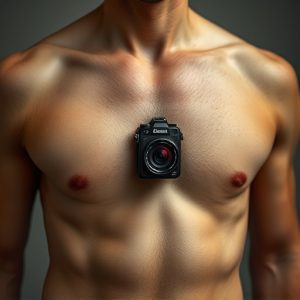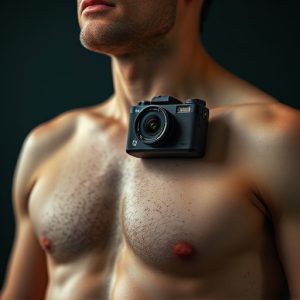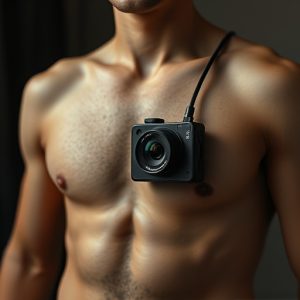Navigating Privacy and Ethics with Hidden Personal Body Cameras
Hidden personal body cameras have been increasingly adopted by law enforcement as a tool for enhanci…….
Hidden personal body cameras have been increasingly adopted by law enforcement as a tool for enhancing accountability and transparency, providing discreet recording capabilities that preserve the natural behavior of subjects, particularly in sensitive situations. However, their use raises significant privacy concerns, necessitating strict adherence to consent, legal, and ethical standards to protect both officers and citizens. The legality of using such cameras is complex and varies by jurisdiction, with important considerations around obtaining consent and avoiding violations of wiretapping or eavesdropping laws. These devices are equipped with advanced technology, including high-definition recording, wide-dynamic range sensors for diverse lighting conditions, high-fidelity microphones for clear audio capture, motion detection for event-triggered recording, secure data storage with encryption and password protection, and additional features like two-way audio, live streaming, and GPS tracking. The ethical deployment of these cameras is paramount, requiring clear guidelines to ensure they are used responsibly and do not infringe on privacy rights or become tools for oppressive surveillance. Users must navigate the legal landscape carefully, respecting privacy expectations and consent, to avoid misuse and maintain societal trust. Regular upkeep of the camera's functionality and security is crucial for maintaining the integrity of the footage if needed as evidence. Ethical and legal adherence is essential for the responsible use of hidden personal body cameras in public and private spaces.
With the advent of technology, privacy concerns have taken center stage in public discourse. Among the myriad technologies raising these issues are hidden personal body cameras. This article delves into the multifaceted implications of these devices, from their technical capabilities to the legal frameworks governing their use. We explore the nuances of owning a hidden personal body camera, the ethical dilemmas it presents, and how individuals can responsibly integrate this technology into their lives. Whether for security or documentation, understanding the scope and impact of hidden personal body cameras is paramount in maintaining individual privacy rights. Join us as we navigate the complexities of this modern-day phenomenon.
Understanding Hidden Personal Body Cameras: A Privacy Perspective
In the current technological landscape, the integration of body cameras in law enforcement has become a standard practice, serving as a critical tool for accountability and transparency. Among these cameras, hidden personal body cameras represent a unique subcategory, designed to operate covertly. These devices offer a privacy-centric approach, allowing officers to record interactions without alerting individuals of the recording’s presence. This stealth capability is pivotal in sensitive situations where subjects may alter their behavior if they are aware of being recorded. The use of hidden personal body cameras raises important privacy considerations, particularly regarding the consent and awareness of those being filmed. It is imperative that the deployment of such technology aligns with legal frameworks and ethical standards that protect both the officer’s and the public’s rights to privacy. Users must navigate these devices with a keen understanding of the jurisdictional regulations and the context in which they are used, ensuring that the capture of audio and video does not infringe upon the personal space or civil liberties of others. As society continues to grapple with the balance between surveillance for safety and the right to privacy, hidden personal body cameras stand at the forefront of this ongoing debate. Their use must be carefully managed to safeguard the integrity of law enforcement while upholding individual privacy rights.
The Legal Landscape of Hidden Personal Body Cameras
The legal landscape surrounding the use of hidden personal body cameras is a complex and evolving area of law, with varying regulations across different jurisdictions. In some regions, privacy laws may prohibit the recording of individuals without their explicit consent, as it infringes on the right to privacy and potentially violates wiretapping or eavesdropping statutes. Users of such devices must be cognizant of these legal boundaries to avoid criminal liability or civil lawsuits. It is crucial for individuals to understand that the legality of using a hidden personal body camera can depend on state or local laws, as well as the context in which the recording is made. For instance, in private settings where all parties involved consent to recording, the use may be legal, but the moment it involves public spaces or non-consenting individuals, the legality becomes questionable and subject to potential legal challenges.
Moreover, the use of hidden personal body cameras can intersect with employment law, particularly in contexts where employers may prohibit their employees from recording coworkers or customers without disclosure. Employees must navigate these issues carefully, as both federal and state laws protect individuals against invasion of privacy by their employers. The legal implications of using a hidden personal body camera must be thoroughly understood to ensure compliance with all applicable laws and regulations, which include not only privacy concerns but also data protection and retention standards. As technology advances and their use becomes more prevalent, the courts will continue to shape the legal framework surrounding hidden personal body cameras, necessitating vigilant attention to the evolving legal landscape by both users and policymakers alike.
Technical Aspects and Features of Hidden Personal Body Cameras
Hidden personal body cameras have become increasingly sophisticated, integrating advanced technical aspects and features that cater to the covert surveillance needs of individuals. These devices are designed with small, unobtrusive form factors that allow for discreet recording without drawing attention. Equipped with high-definition video capabilities, they capture clear, detailed footage suitable for a range of applications, from personal security to investigative purposes. The cameras often feature wide-dynamic range sensors to handle varying lighting conditions, ensuring the quality of the recordings remains consistent whether in bright sunlight or dim indoor environments. Additionally, they are typically equipped with high-fidelity microphones to accurately record audio, complementing the visual data.
In terms of features, hidden personal body cameras come armed with motion detection and event-triggered recording, which activates the camera upon movement, conserving memory space by only recording when necessary. They also offer secure file storage, with options for local SD card storage or cloud-based solutions, providing users with the flexibility to access their footage securely. For enhanced privacy, these cameras are designed with built-in encryption and password protection, deterring unauthorized access. Furthermore, they often incorporate rechargeable lithium batteries that offer extended recording times, ensuring users have reliable surveillance for longer periods without frequent charging. With features like two-way audio, real-time video streaming, and GPS tracking, hidden personal body cameras are not just about capturing events but also about interacting with the environment and locating the device precisely. These technological advancements make hidden personal body cameras a powerful tool for individuals seeking to record their environments discreetly and securely.
Ethical Considerations in the Use of Hidden Personal Body Cameras
The advent of hidden personal body cameras has sparked a critical debate on privacy and surveillance within ethical frameworks. These devices, capable of discreetly recording audio and video in public spaces, raise significant concerns regarding consent and the expectation of privacy. One must consider the potential for misuse, as individuals may record unsuspecting parties without their knowledge or consent, which can infringe upon the rights of those being recorded. The ethical use of such technology necessitates clear guidelines that delineate acceptable recording practices and protect personal data from unauthorized access or exploitation. It is imperative to navigate these devices’ deployment with caution, ensuring that they do not become instruments of oppression or invasion of privacy under the guise of safety or accountability. The balance between public observation and individual expectation of privacy must be carefully managed, with an emphasis on transparency and oversight to prevent abuse and maintain trust in society.
Best Practices for Using Hidden Personal Body Cameras Responsibly
When integrating a hidden personal body camera into one’s daily activities, it is imperative to adhere to a set of best practices that respect privacy and legality. These devices should be used transparently; informing all parties involved when recording is taking place. Consent is a cornerstone of ethical recording; without it, the footage may be compromised and could potentially lead to legal issues. It’s also crucial to understand the local laws regarding surveillance and recording in public and private spaces to avoid any unintentional breaches of privacy or data protection laws.
Furthermore, users of hidden personal body cameras must exercise discretion in when and how they use these devices. The intention behind recording should always be clear: for safety, as a witness to events, or for personal documentation. Users should avoid intrusive or covert recording in spaces where there is a reasonable expectation of privacy. Maintaining the camera in good working order and secure from unauthorized access ensures the integrity of the footage in case it needs to be reviewed or used as evidence. Responsible use also involves regularly reviewing and deleting unnecessary footage to prevent misuse or data breaches. By following these best practices, individuals can responsibly utilize hidden personal body cameras while safeguarding their privacy and the privacy of others.


